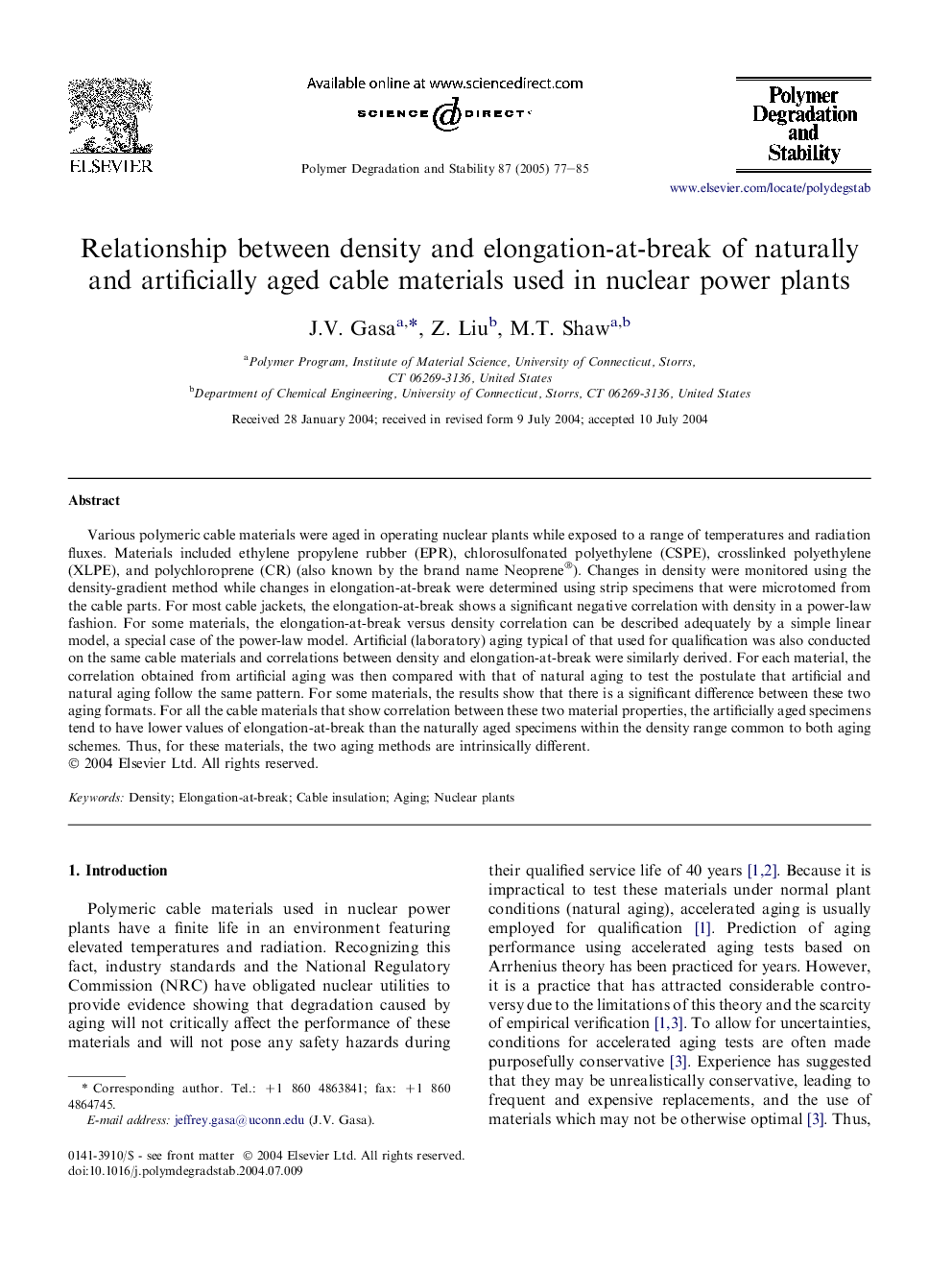| Article ID | Journal | Published Year | Pages | File Type |
|---|---|---|---|---|
| 9560325 | Polymer Degradation and Stability | 2005 | 9 Pages |
Abstract
Various polymeric cable materials were aged in operating nuclear plants while exposed to a range of temperatures and radiation fluxes. Materials included ethylene propylene rubber (EPR), chlorosulfonated polyethylene (CSPE), crosslinked polyethylene (XLPE), and polychloroprene (CR) (also known by the brand name Neoprene®). Changes in density were monitored using the density-gradient method while changes in elongation-at-break were determined using strip specimens that were microtomed from the cable parts. For most cable jackets, the elongation-at-break shows a significant negative correlation with density in a power-law fashion. For some materials, the elongation-at-break versus density correlation can be described adequately by a simple linear model, a special case of the power-law model. Artificial (laboratory) aging typical of that used for qualification was also conducted on the same cable materials and correlations between density and elongation-at-break were similarly derived. For each material, the correlation obtained from artificial aging was then compared with that of natural aging to test the postulate that artificial and natural aging follow the same pattern. For some materials, the results show that there is a significant difference between these two aging formats. For all the cable materials that show correlation between these two material properties, the artificially aged specimens tend to have lower values of elongation-at-break than the naturally aged specimens within the density range common to both aging schemes. Thus, for these materials, the two aging methods are intrinsically different.
Related Topics
Physical Sciences and Engineering
Chemistry
Organic Chemistry
Authors
J.V. Gasa, Z. Liu, M.T. Shaw,
